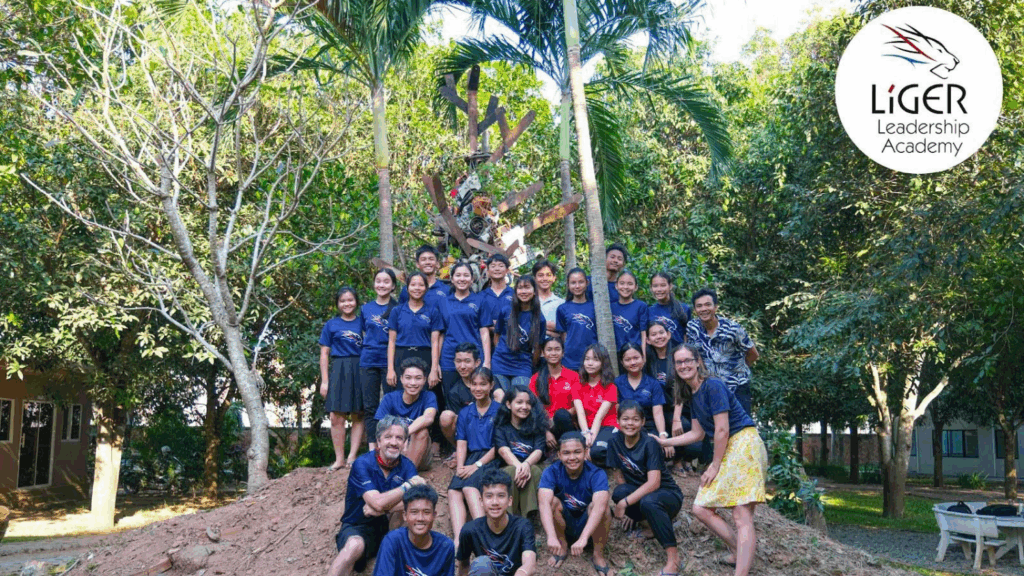In today’s interconnected world, the ability to collaborate across cultures is more important than ever. Whether students are working on global projects, connecting with international peers, or simply preparing for a diverse workplace, they need skills to navigate cultural differences with empathy and respect. At Orenda Learning, we believe fostering cross-cultural collaboration enriches student learning and broadens perspectives.
Be The Change by Orenda Learning was conceived to empower and launch youth into action in their communities that leads towards positive change. Inspired by the ideals of the United World College (UWC) movement and spearheaded by UWCSEA alumni and former teacher Alice Whitehead, BTC equips young people with the skills, qualities, and agency to drive positive change in a rapidly evolving world.
Historically the UWC movement was conceived as a way to unite people, nations and cultures through education. Having spent 15 years of her childhood in Singapore and attended UWCSEA as a high school student, Alice was immersed in a multicultural environment from a young age and learned to see the need to collaborate across cultures as fundamental.
Be The Change includes a three-part lesson series called ‘Connecting With Others’ to support young individuals to develop their interpersonal skills and increase their ability to connect, communicate and collaborate with others from diverse backgrounds. When we can work together for a common purpose we can make progress towards a more just and sustainable world.
Want to increase the level of cross-cultural collaboration in your students? Here are seven strategies teachers can use to help students work effectively across cultures.
1. Establish a Shared Purpose
Collaboration is most effective when students feel a sense of shared purpose. Designing projects around global challenges such as the United Nations Sustainable Development Goals (SDGs) can unite students despite cultural differences. Storytelling can also be a powerful way to create shared understanding. Encourage students to document their experiences, perspectives, and reflections as they collaborate, helping them see connections beyond cultural boundaries.

2. Build Cultural Awareness and Empathy
Before diving into collaborative work, help students explore cultural awareness. Activities like the “Cultural Iceberg” (which examines visible and invisible aspects of culture) or “What’s in a Name?” (where students share the history or meaning behind their names) can be great starting points. Pairing students for cross-cultural interviews about traditions, values, and daily life fosters understanding and appreciation.
3. Teach Active Listening and Open Communication
Effective collaboration depends on strong communication skills. Model and practice active listening techniques with students, such as paraphrasing, summarising, and asking clarifying questions. Setting ground rules for respectful discussion—including how to disagree constructively—can create a safe space for diverse perspectives to be heard and valued.
4. Use Digital Collaboration Tools
Technology bridges geographic and cultural gaps, making global teamwork easier. Platforms like Padlet, Flipgrid, and Google Docs allow students to collaborate asynchronously, while video conferencing fosters real-time discussion. Guide students to document their collaborative journey through video reflections, shared journals, or digital scrapbooks to capture insights and growth.
5. Foster Peer Leadership and Shared Decision-Making
Cross-cultural collaboration thrives when students take ownership of their projects. Rotate leadership roles within groups to ensure that all voices are heard. Encourage students to navigate differences through discussion and compromise, guiding them in developing conflict-resolution strategies that honour diverse viewpoints.

6. Provide Real-World Contexts
Bringing real-world connections into the classroom makes cross-cultural collaboration more meaningful. Partner with international classrooms, participate in global projects, or invite guest speakers from diverse backgrounds to share their experiences. Service initiatives are a fantastic learning opportunity for students, as they provide a real-world context which often spans cultures and includes engagement with people from different backgrounds.
7. Celebrate Differences and Commonalities
Help students recognise the value of diversity while finding common ground. Encourage them to share cultural “snapshots” through presentations, music, food, or storytelling. Wrap up collaborative projects with reflection activities: What surprised them? What challenges did they overcome? What connections did they make? These reflections reinforce the impact of cross-cultural learning.
Conclusion
By integrating these strategies, educators can empower students to collaborate across cultures with confidence, curiosity, and respect. Cross-cultural teamwork not only strengthens academic and communication skills but also nurtures global citizens who are prepared to work toward a more connected and inclusive world. What strategies have worked in your classroom? Share your experiences with us at Orenda Learning, and let’s continue building bridges across cultures!






